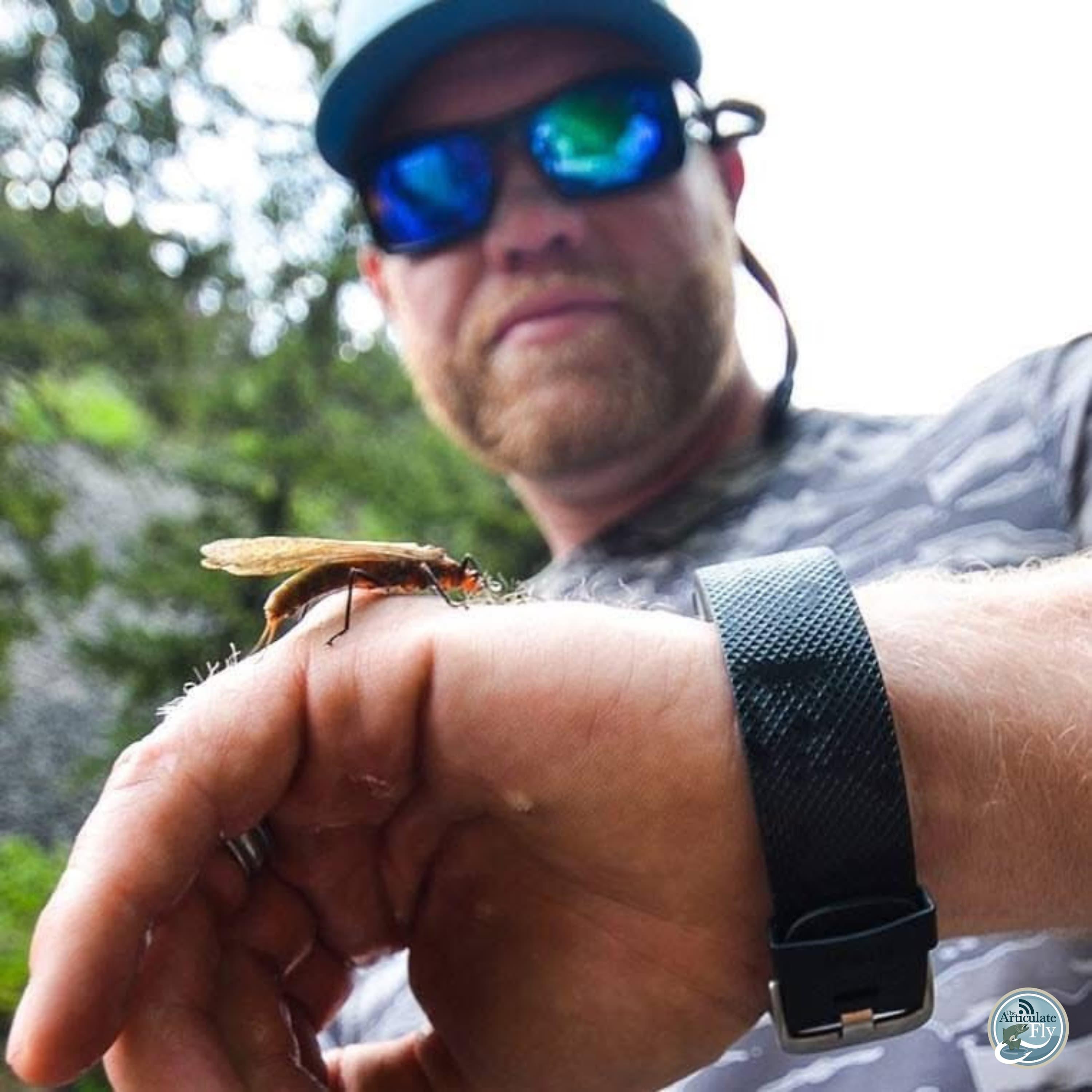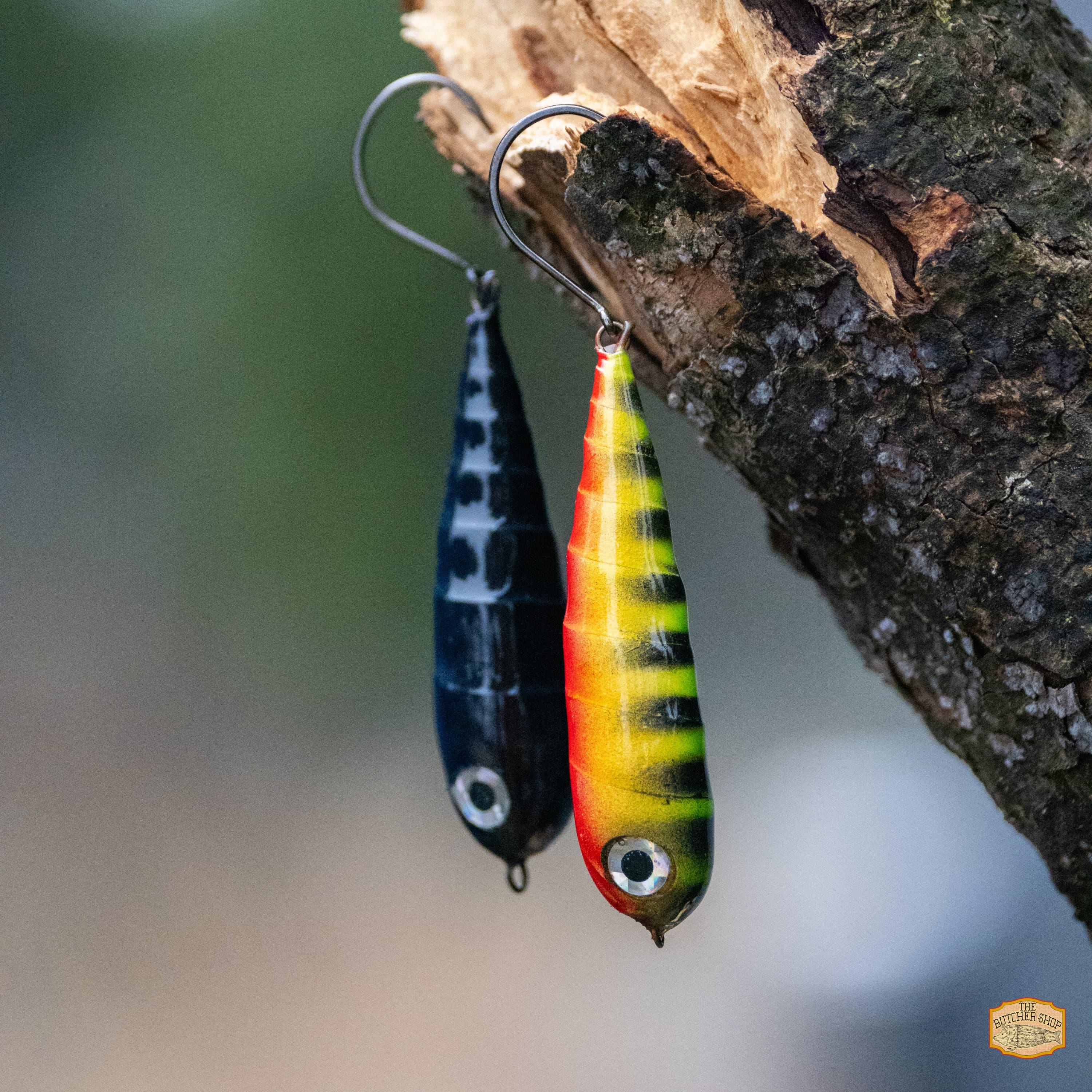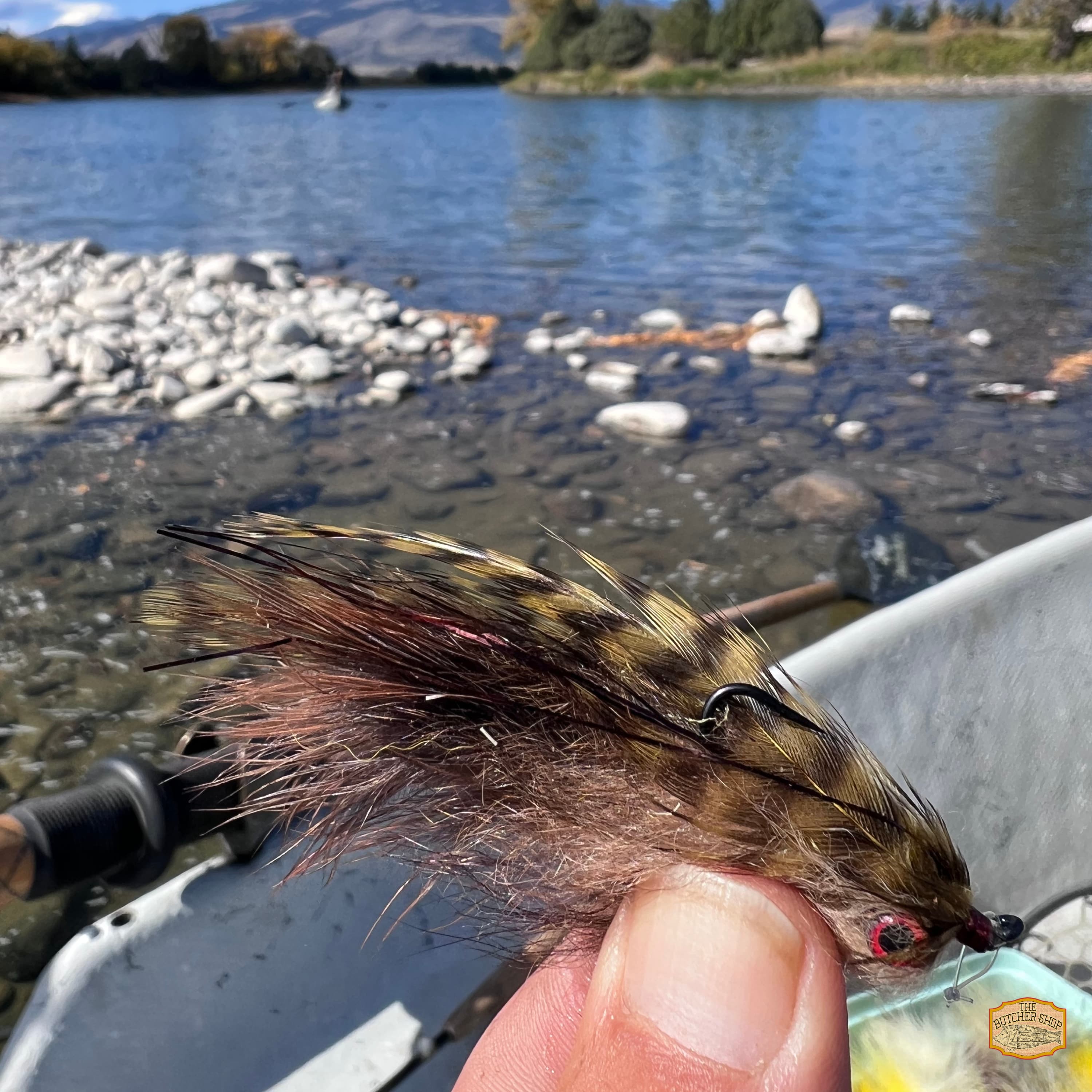S7, Ep 55: Low and Clear: Mastering Summer Fishing Strategies with Mac Brown
In this episode of The Articulate Fly, host Marvin Cash is joined by casting expert Mac Brown for another insightful installment of Casting Angles. As the summer heat intensifies, Mac shares his strategies for fishing in low and clear water conditions, emphasizing the importance of adjusting techniques and equipment for success.
Listeners will learn about the benefits of using longer leaders with stiffer butt sections to improve accuracy and precision when casting. Mac discusses the pitfalls of adding too much tippet and provides practical tips for effective nymph fishing without spooking fish. He also highlights the significance of planning presentations to avoid disturbing the water's surface.
The conversation shifts to innovative rigging techniques, including the use of dry flies as indicators and the advantages of using colored markers on leaders for better visibility. Mac even shares a unique method to treat leaders with Sno Seal for enhanced buoyancy, ensuring that anglers can maintain their setups throughout the day.
As the episode wraps up, Marvin and Mac discuss the importance of advocating for public lands and the ongoing legislative efforts that could impact outdoor recreation. They encourage listeners to make their voices heard in support of preserving access to these vital spaces.
This episode is packed with expert advice and actionable insights that will inspire anglers to adapt their approaches and make the most of their summer fishing adventures.
Trout Unlimited's Public Land Take Action
Related Content
S7, Ep 41 - Navigating High Water: Strategies for Success with Mac Brown
S6, Ep 83 - Hot Days and Clear Waters: Matt Reilly's Southwest Virginia Fishing Report
S7, Ep 34 - Casting in the Chaos: Navigating Windy Waters with Ellis Ward
S6, Ep 141 - Mastering Cold Weather Fly Fishing with Mac Brown
All Things Social Media
Follow Mac on Facebook, Instagram and Twitter.
Follow us on Facebook, Instagram, Twitter and YouTube.
Support the Show
Subscribe to the Podcast
Subscribe to the podcast in the podcatcher of your choice.
Advertise on the Podcast
Is our community a good fit for your brand? Advertise with us.
In the Industry and Need Help Getting Unstuck?
Check out our consulting options!
EPISODE SUMMARY
Guest: Mac Brown - Fly Fishing Guide and Instructor at Mac Brown Fly Fish/Fly Fishing Guide School (Bryson City, NC)
In this episode: Guide Mac Brown shares low and clear water fishing techniques for summer conditions. Topics include leader construction strategies, nymph fishing presentations and dry dropper tactics for technical water.
Key fishing techniques covered: • Leader construction with proper butt sections for accuracy • Dry dropper rigging with nymph positioned between angler and dry fly • Yarn indicator presentations instead of bobbers • Leader marking with colored pens and Sno Seal for visibility • Horizontal plane casting under rhododendron and vegetation
Location focus: North Carolina mountains and Piedmont regions
Target species: Trout (implied)
Equipment discussed: Leaders, tippet, New Zealand yarn, SA sighter pens, Sno Seal, micro-caddis indicators, PVC forms for leader marking
Key questions answered: • How to fish low and clear water effectively • How to construct leaders for technical presentations • How to mark leaders for better visibility in summer conditions
Best for: Intermediate to advanced anglers interested in technical summer fishing and low water presentations
Marvin Cash
Hey folks, it's Marvin Cash, the host of the articulate fly. We're back with another casting angles with Mac Brown. Mac, how are you?
Mac Brown
I'm doing great. How are you doing, Marvin?
Marvin Cash
Dude, I'm just trying to stay cool. It is hot, hot, hot in the Piedmont.
Mac Brown
I bet it's hot up here. We're hot in the mountains, I always think. Yeah, I'm sure it's hot down in the Piedmont in the low country.
Marvin Cash
Yeah, we're in Charlotte.We're going to be bumping 100 degrees pretty close probably until, you know, we were talking before we started recording and we've talked a lot about when you should and shouldn't fish and all that kind of good stuff.But you know, as we head deeper, you know, into the summertime, the float, the water flows are going to get lower and lower if you're not fishing a tailwater. And so we thought it'd be a good idea to kind of talk to people about, you know, what do you do when you got to go fish low and clear water?
Mac Brown
Yeah, that'd be, I think that's a good, a good topic. First thing, go up higher. Try to get up high and fish early, early in the morning at daylight.And far as equipment goes, lengthening up the leaders and adding greater, you know, longer tip, it and, and going that route would really help things because when it water gets lower, it's going to get a lot more technical than with big water, you know.
Marvin Cash
Yeah.And I would say too, like if you roll your own on the leader basis, if you, you know, want to try to get a little bit of help, you know, turning over a longer leader. You want a stiffer butt section, right?
Mac Brown
Oh, yeah, for sure. That's, that's the key. There's a lot of confusion on that over the years where people thought they just had a whole bunch of tippet.Bad things happen when you add way too much tippet and you just get a bunch of uncontrollable slack, you know. So yeah, butt section, midsection, you don't need but a few feet of tip, you know, three to four feet of tippet tops.Most, most of the leaders, the other.
Marvin Cash
Yeah. And so, you know, most of the time, right. You know, you can either take a store bought leader and clip it at the loop and add more butt material.Right. Or you can roll your own.
Mac Brown
Yeah, just roll your own. Yeah, it's a lot easier.Well, yeah, man, I prefer to roll, roll the own, but, but yeah, that's a good idea if you're Gonna have like I say, a 9 foot, 12 foot, store bought leader. Then just add some butt section to it. You know, that'd be the, that'd be the way to go. And then, then, then add a little bit of tip it.But it'd work out a lot better.I've seen it so many times since the mid-80s when we got into doing this Marvin for a living, that everybody would just add tip it and I'd tip it to a short leader to begin with. And it's just kind of disastrous as far as performance, you know.
Marvin Cash
Yeah. Unless you got like a bead on that fly, you're gonna have a really hard time not having a puddle of mono or fluoro at the end of that leader.
Mac Brown
Yeah, that's what would happen. And it would really, it just really helps to have it where it transfers properly.It means coming from the bigger stuff, you know, that way you still have your accuracy, you still have, you know, precision base. Because in this part of the country, well, you know, it's the highest number of deciduous trees in the world.So you're all the time having to drop the casting plane down there to the side, send something up, you know, underneath.Like rhododendron is usually the most common thing, but there's other things, I mean, there's a lot of other trees and stuff too over the water, but roto being probably the predominant. And whenever you're doing that, that's gonna transfer a lot better, you know, in the horizontal plane.Even having some butt section where it sends the fly way up and under where you want it to be.
Marvin Cash
Yeah, And I would say too, on presentation, right. If you're nymph fishing, you should leave the indicator in your shirt pocket. Right.And because it's just going to make a plop and you're going to probably spook fish and you probably either want to use yarn or maybe use a dry fly as an indicator. And then I always tell people that, you know, when the water's skinny, you got to kind of plan your presentation.So maybe you have to, you know, put the fly down, you know, well above the fish so that you don't, they don't get a splash right on top of their head and then go hide under the rocks. Right?
Mac Brown
Yeah, that's right. Yeah. Leave the bobbers. Leave the bobbers out and really go to more tactical, finesseful setups like small, you know, microcatis and things like.That's probably a lot better option. You know, we, we were doing that a lot. We were here we've just been hot like you said.But, you know, we had like a month of rain every day and overcast weather and we were doing a lot of dry dropper and playing around a lot with the rigging. You know, everybody always thinks the, the small emerger or whatever goes off the point.And a lot of times we'll do it the other way where the dry flies at the end and come back up and then have just a short 4 or 5 inch tag and then have the emerger in between the dry fly and you.And that way it's pretty easy to tell when something happens because any kind of disturbance, you know, you're looking out towards where your dry fly is and you see the disturbance. Always if a fly is only 4 or 5 inches deep, you'll normally see a disturbance there on the surface.And that makes it a little bit easier to fish that way, I think.
Marvin Cash
Yeah, I would say too, like, you know, you can do something like that. You can always like, I like New Zealand yarn, but you know, also too, I saw your Instagram reel.You had some of those SA cider pens and you know, you can actually mark that high up on the leader away from the fly and you can just watch that movement relative to where you think your fly is. And that'll help you.
Mac Brown
That's a really good way to do it too. And another trick that we use a lot with that is snow seal.Like you put on telemark ski boots and remember the old leather boots you buy Snow seal, it's mostly beeswax, but that's the best product that I've seen over the years that you could commercially buy at a floated leader is.I know they make lots of things and in the old days you'd hear people say, put mucilin that just kind of washes off and an oil slick right away on the water. So that's not very good for longevity. But snow seal will stay on the leader. So what I like to do a lot is use those marker pins.And then after the marker pins there, I put a, put a layer of snow seal right over top of it and that'll float. That'll float all day long. You don't have to retreat it. It's there for the duration, you know.
Marvin Cash
Yeah.And I would tell people too, you know, there's an advantage to having more than one color because you will find wherever you fish that you're going to get better contrast probably with one color versus the other. And you can even alternate colors. But that's another trick, right?
Mac Brown
Yeah. It is. I like to times I do it on a form and I mean, that sounds picky, but it's a whole lot easier and faster to do.So if you just take it and roll it on like I carry a piece of PVC in the truck.There's always a little piece of PVC for ham radio stuff, you know, and I'll just put, take the mono and wrap it like ten times on say a inch and a half, two inch form. And then you take one color and, you know, make it look like a yellow jacket. You'd use yellow and black, you know, a chartreuse and pink.I mean, you can do whatever color combo you want, but I like to have a lot of separate colors rather than just a solid color. Usually I'll do, you know, multiple colors and it's real quick to do.If you just wind it, then hit it, just draw a straight line down, draw another straight line down, and you're done, you know.
Marvin Cash
Yeah, absolutely. I haven't thought about beeswax since I was in the Boy Scouts. That's what I used to treat my, my boots with and used to hit them with the hair dryer.
Mac Brown
Oh, yeah, it'll make them, make them shine and repel water. Yeah.
Marvin Cash
So some, just some tips, folks, you know, and I would say too, you know, as we head deeper into the summertime, you know, don't forget what we've said in the past few fishing reports about how terrestrials are going to become more and more powerful. Inchworms, beetles, ants, all kinds of good stuff.But one thing we wanted to let you guys know about, if haven't seen it yet in the outdoor community, there's been a lot of communication around in the, the budget bill that's working its way through Congress right now. The Senate version has put in the provision to sell a significant amount of public land.And that's obviously upset at, you know, hunters, fishermen, hikers, all kinds of outdoor recreation enthusiasts. And I'm going to drop a link to Trout Unlimited is one of many outdoor organizations.If you belong to backcountry hunters and anglers or Sierra Club or any of those groups, they're going to have links to reach out to your senators and your congressmen. But I would encourage you to do that. The deadline is the Fourth of July weekend. That's kind of generally where the process is running.So if you value access to public lands to hunt, fish, hike and recreate, I would encourage you to tap the link that I'm going to put in the show notes and let your Elected officials know that.
Mac Brown
That's right. Yeah, I think that'd be. That'd be really helpful. Cause that's about the only recourse we have is. Is.Is anglers and hunters and, you know, trail hikers. I mean, we like to do a lot of hiking here in the national park. It's not national parks that are at risk.But there's so many Forest Service and BLM land on the west western part of the United States are looking at selling off. And it'd be a good thing to really push hard and push back this next week for folks.
Marvin Cash
Yeah. And I would say, you know, folks, you know, when it's gone, it's gone. So if it's important to you, you need to make your voice heard.
Mac Brown
That's right. Yeah.
Marvin Cash
Well, as we both try to stay cool. So you're drinking lemonade and gin and tonics and beer in the shade up in Bryson City. I know you're guiding.You don't have schools until the fall, but you want to kind of let folks know how to reach out and get on the guidebook, talk about schools and all that kind of good stuff.
Mac Brown
Mac Brown so the best place probably email off the websites@macbrownflyfish.com or the fly fishingguideschool.com then social media, same name on Instagram and Facebook. It's better to email, though, off the. Off the URL, because I don't always look at the.I'm not as savvy about the social media stuff as somebody half my age, probably. Marvin. So email's probably better.
Marvin Cash
Yeah, I'm savvy, but I still prefer one mailbox as opposed to six or seven. So that's just me, so. Well, folks, as I always say, this time of year I'm going to add a little something.You need to stay cool, and you owe it yourself to get out there and catch a few. Tight lines, everybody. Tight lines.
Mac Brown
Mac Tight lines. Marvin.

Mac Brown
Guide | Casting Instructor | Author
Mac Brown is the owner of Mac Brown Fly Fish and Fly Fishing Guide School in Western NC. Mac created the first full-time fly fishing guide service in Western North Carolina. The first Delayed Harvest on the Upper Nantahala River in early 1993 was also a result of his efforts.
Mac Brown is the author of “Casting Angles” which is a fly casting handbook for those on the journey of understanding the mechanics of the cast. The ACA, FFI, and others have endorsed this text as a reference for instructors as well. Mac is a Master Casting Instructor through the Fly Fishers International.










